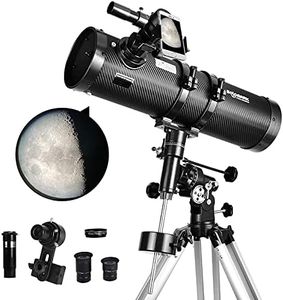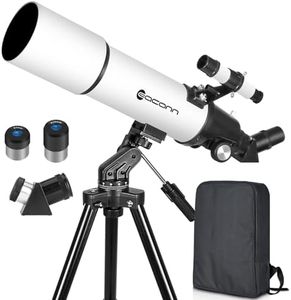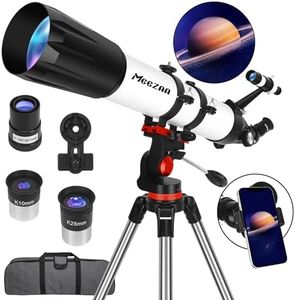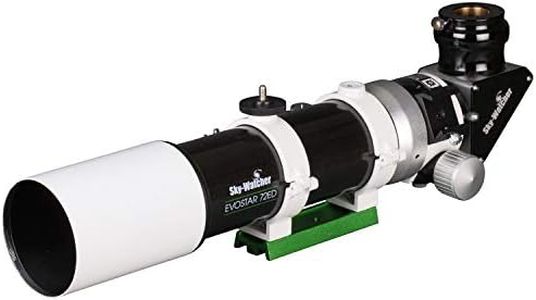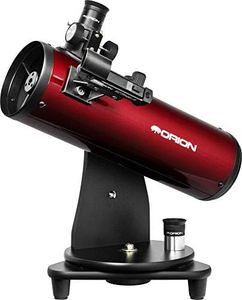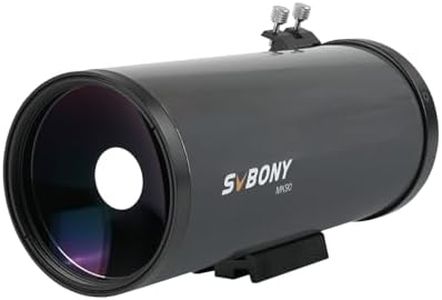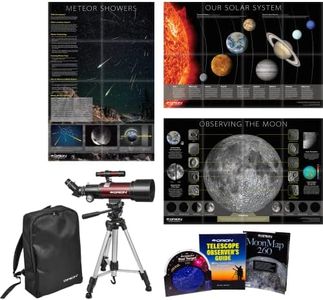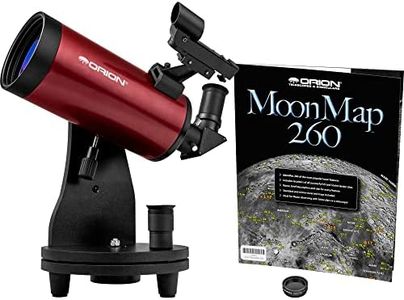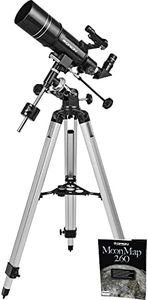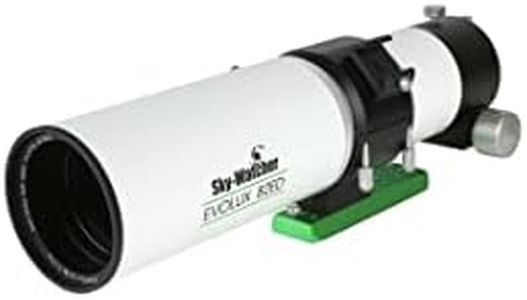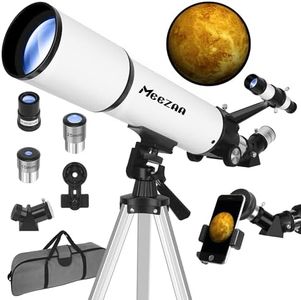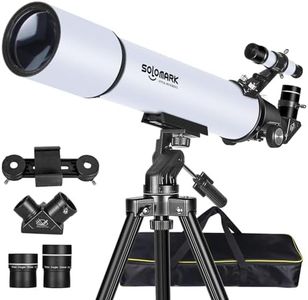We Use CookiesWe use cookies to enhance the security, performance,
functionality and for analytical and promotional activities. By continuing to browse this site you
are agreeing to our privacy policy
10 Best Telescopes
From leading brands and best sellers available on the web.Buying Guide for the Best Telescopes
Choosing the right telescope can open up a whole new world of stargazing and astronomy. The best telescope for you depends on what you want to observe, how much space you have, and how portable you need it to be. It's important to understand the main features of telescopes so you can match them to your interests, whether that's looking at the moon, planets, or deep-sky objects like galaxies and nebulae. By learning about the key specifications, you'll be able to make a choice that keeps you excited about exploring the night sky.ApertureAperture refers to the diameter of the main lens or mirror of the telescope, and it's one of the most important specs because it determines how much light the telescope can gather. More light means you can see fainter objects and get clearer, brighter images. Aperture sizes are usually measured in millimeters or inches. Small apertures (under 80mm/3 inches) are good for casual viewing of the moon and bright planets. Medium apertures (80-130mm/3-5 inches) let you see more detail and some deep-sky objects. Large apertures (over 130mm/5 inches) are best for serious deep-sky observation. If you want to see faint galaxies or nebulae, go for a larger aperture, but if you're mainly interested in the moon and planets, a smaller one will do.
Focal LengthFocal length is the distance from the telescope's lens or mirror to the point where it forms an image. This affects the magnification and field of view. Short focal lengths (under 700mm) give you a wider view, which is great for scanning large areas of the sky and viewing star clusters. Long focal lengths (over 1000mm) provide higher magnification, making them better for detailed views of planets and the moon. If you want to see wide areas of the sky, choose a shorter focal length, but if you want to zoom in on planets, a longer focal length is better.
Mount TypeThe mount is what holds the telescope steady and allows you to move it. There are two main types: alt-azimuth and equatorial. Alt-azimuth mounts move up/down and left/right, making them simple and intuitive for beginners. Equatorial mounts are designed to follow the rotation of the sky, which is helpful for tracking objects as they move, especially if you want to do astrophotography. If you want easy setup and use, go for an alt-azimuth mount. If you plan to track objects for long periods or take photos, an equatorial mount is a better choice.
PortabilityPortability refers to how easy it is to move and set up your telescope. Smaller, lighter telescopes are easier to carry and set up, making them great for travel or quick observing sessions. Larger telescopes can be heavy and bulky, but they often offer better views. If you plan to observe from different locations or need to store your telescope in a small space, prioritize portability. If you have a permanent spot for observing, you can consider a larger, less portable model.
Eyepieces and AccessoriesEyepieces determine the magnification and field of view you get from your telescope. Most telescopes come with one or two eyepieces, but you can buy more to get different views. Lower magnification eyepieces are good for wide views, while higher magnification ones are better for close-ups. Other accessories, like finderscopes or smartphone adapters, can make observing easier or more fun. Think about what you want to see and how you want to use your telescope, and make sure it comes with or can use the accessories you need.
